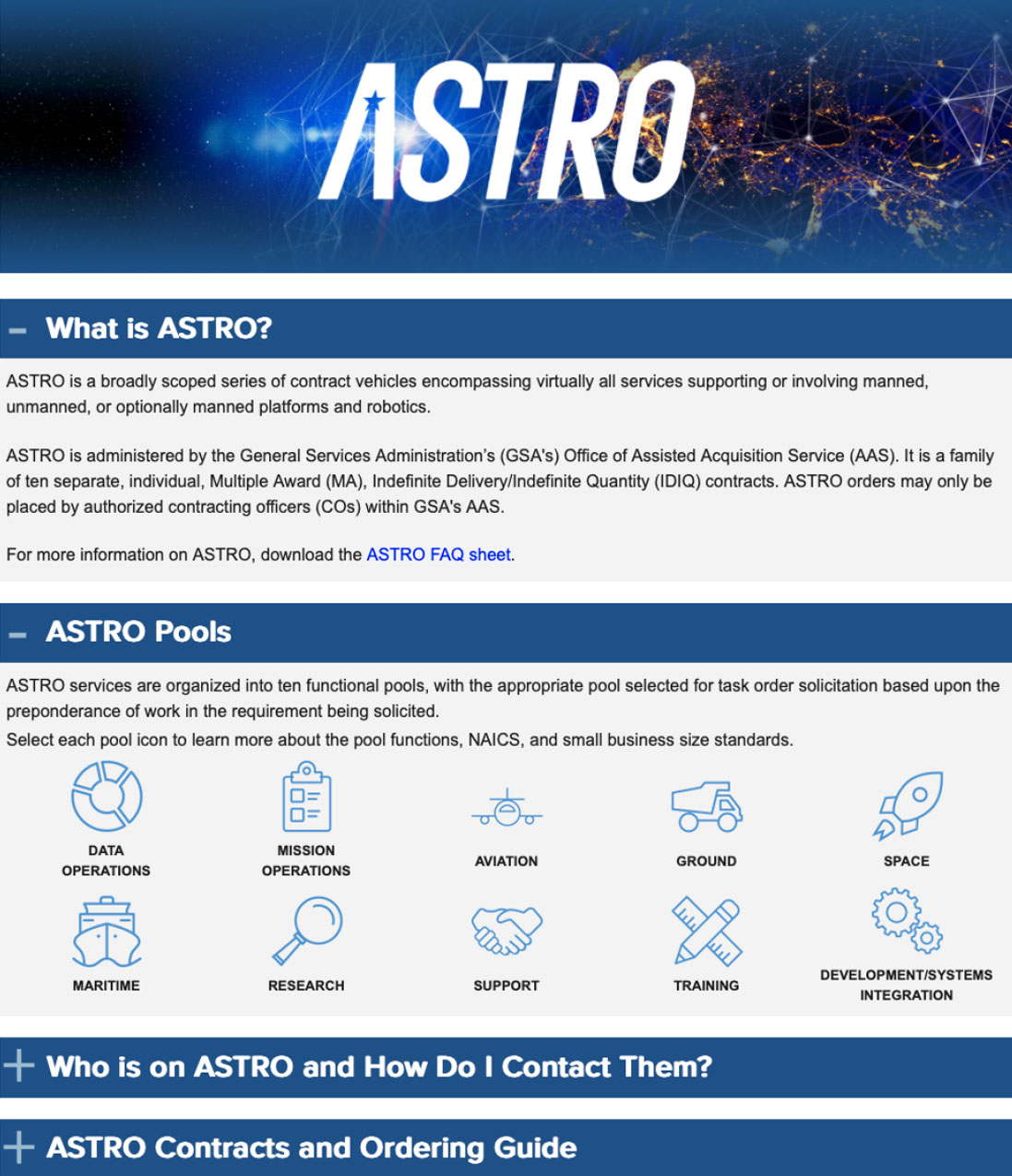
Enhancing Assisted Acquisition Services
Insights from Corey Nickens, Client Executive of the Innovation Business Unit, Office of Assisted Acquisition Services, U.S. General Services Administration
By Michael J. Keegan
In a dynamic landscape where government agencies strive to deliver better services, foster innovation, and support small businesses, agility and efficiency are paramount. Agencies are looking for more effectives ways to procure essential goods and services by using the best contract vehicles available. The U.S. General Services Administration’s (GSA) Office of Assisted Acquisition Services (AAS) plays an integral role in helping federal agencies do just that. Situated within GSA’s Federal Acquisition Service, AAS is a full spectrum, cradle-to-grave acquisition, project, and financial management service provider to federal agencies.
Corey Nickens, client executive for AAS’ Innovation Business Unit, joined me on The Business of Government Hour to discuss the strategic priorities of his portfolio, challenges faced, and innovative approaches taken that defines AAS’s mission as AAS seeks to modernize its processes and enhance user experiences, Nickens articulates a vision grounded in collaboration, emerging technologies, and a deep commitment to understanding customer needs. The following is a summary of our discussion, complemented with updated and additional research.
The Mission of AAS and its Innovation Portfolio
At the heart of AAS’s mission is the commitment to deliver efficient, effective, and innovative acquisition solutions that meet the diverse needs of government agencies. Nickens emphasizes, “Our primary focus is to expand our capabilities in areas that directly impact the customer experience.” This customer-centric approach is complemented by an innovation portfolio that seeks to streamline processes, making it easier for agencies to procure what they require. AAS is increasingly focused on leveraging emerging technologies which Nickens describes as pivotal in enhancing acquisition processes. “We are leveraging innovative acquisition practices,” he explains, “to help our partners meet their mission needs in a way that’s efficient, effective, and forward-thinking. Our innovation portfolio includes initiatives like promoting agile methodologies, advancing category management, and exploring ways to incorporate emerging technologies into the acquisition process.”
AAS offers customized acquisition, project, and financial management support services to federal agencies on a fee-for-service basis.

Organizational Realignment
AAS has undergone a significant reorganization. Previously, AAS supported federal clients out of 12 Client Support Centers (CSCs) based in the 11 GSA regional offices as well as GSA’s central office. Additionally, two CSCs provide assisted acquisition services for Small Business Innovation Research (SBIR) Phases I and II, and four CSCs provide assistance for SBIR Phase III. SBIR is a competitive program that encourages domestic small businesses to engage in federal research and development.
GSA Federal Acquisition Service (FAS) consolidated the acquisition offices of Federal Systems Integration and Management Center (FEDSIM) and regions into client-centric groups. In this new structure, there will be three different Service Delivery Modules (SDM), which we discuss in more detail later. Nickens explains, “One of the benefits of realignment has been the ability to scale . . . previously we had this capability in pockets of the organization, most notably our legacy FEDSIM office. . . . With the realignment, it was very important for us to create what we keep saying is a consistent stakeholder experience. At the same time, it was crucial . . . that standardization is not a one-size-fits-all solution for AAS.” The three service delivery models achieve that right balance of brand awareness, productivity, and efficiencies for our employees and our external partners, according to Nickens. He described the realignment as a critical step that allowed AAS to streamline its operations, enhance its engagement with stakeholders, and improve the overall consistency and scalability of its services across the organization.
“We are leveraging innovative acquisition practices to help our partners meet their mission needs in a way that’s efficient, effective, and forward-thinking.”
Corey Nickens, Client Executive, Innovation Business Unit, Assisted Acquisition Services, U.S. General Services Administration

Reimagining the Acquisition Pipeline
One of the standout initiatives highlighted by Nickens was the transformation of AAS's acquisition pipeline review process. “We launched a brand-new industry page,” he explains, “with the forecasting dashboard. Through this new industry page, we share information and data . . . with industry at one time than we ever have before.” Also, AAS expanded pipeline reviews and the new model mirrors the "Industry Day" events, providing opportunities for industry partners to interact directly with AAS business units and gain insights into upcoming procurements.

Nickens emphasizes that these revamped pipeline reviews are pivotal for building trust and transparency with industry partners. “The pipeline data is gathered through consistent processes across all business units,” he notes. “It has estimated dollar values and ranges. It has information about upcoming engagement dates.” By sharing critical information, such as the expected contract type and upcoming milestones, AAS enables industry partners to plan more effectively and align their resources with upcoming opportunities. This expanded model has been met with positive feedback from industry participants, with attendance ranging from 150 to 200 participants for each session across different business units. These sessions - branded with unique themes such as “First Fridays” and “Third Thursdays” - have become a cornerstone for AAS' engagement with industry, fostering a collaborative environment that benefits both the agency and its partners. These acquisition pipeline reviews illustrate the importance in industry collaboration, and the structured communication channels established for better engagement with industry partners. “We want to ensure that the pipeline,” he says, “is visible to our stakeholders, so they can see how their needs are being addressed.”
Service Delivery Models: FEDSIM, FLEX and INNOVATE
To better cater to the diverse needs of its federal customers, AAS has introduced three distinct service delivery models—FEDSIM, FLEX, and INNOVATE—each tailored to specific contract types and focus areas. Nickens explains that these models were created to provide a consistent stakeholder experience while recognizing that a one-size-fits-all solution is not feasible given the breadth of AAS’s $18 billion portfolio.
FEDSIM: This model is dedicated to handling noncommercial acquisitions, specifically cost-type acquisitions like cost-plus fixed fee or incentive fee contracts. By reimagining FEDSIM as a process rather than an organization, GSA aims to streamline complex projects typically associated with cost-type contracts, ensuring they are executed with the necessary rigor and infrastructure. “From a dollar value perspective, this SDM [service delivery model] represents the predominance of AAS business,” says Nickens.
FLEX: The FLEX model is designed to accommodate both commercial and noncommercial acquisitions, excluding cost-type contracts. This service delivery model, which focuses on firm fixed-price, time and material, and labor hour contracts, represents the bulk of AAS’s business by contract count. “Not looking at dollars, but looking more at just contract actions," explains Nickens,” this service delivery model represents the predominance of our AAS business overall.” It offers a more agile and streamlined process, making it ideal for projects that require flexibility and speed.
INNOVATE: As the name suggests, the INNOVATE model, “which is in my business unit,” notes Nickens, is centered around driving innovation through SBIR, technology transfer research, and commercial solutions openings. This model standardizes the way AAS engages with emerging technologies and innovation-focused projects, making it the go-to for nontraditional contracts that require a more forward-thinking approach. By segmenting its services into these three models, AAS ensures that it can cater to the unique needs of each project while maintaining operational efficiency and brand consistency across the board.
These three models were developed to provide a structured and effective approach for addressing a wide range of acquisition needs, while also ensuring a balance of standardization and flexibility to meet client and stakeholder expectations. By segmenting its services into these three models, AAS ensures that it can cater to the unique needs of each project while maintaining operational efficiency and brand consistency across the board
Promoting Small Business Innovation
GSA’s role in supporting small businesses, particularly through the Small Business Innovation Research (SBIR) program, has been a key success story. He elaborated on how GSA has consolidated its support for SBIR under a single business unit, creating a center of excellence that facilitates the transition from early-stage research and development to commercialization.
According to Nickens, the consolidation of SBIR under the Innovation Business Unit has resulted in a streamlined approach that allows GSA to better serve participating agencies while also providing small businesses with greater visibility and opportunities within the federal market. Since its inception, GSA has awarded contracts to over 90 unique contractors across 29 states and the District of Columbia. This success is a testament to GSA’s ability to nurture small businesses and help them scale their innovative solutions.
iP3 Contract Vehicle
One of the most significant developments in AAS’s innovation strategy is the introduction of the Innovation in Phase Three (iP3) contract vehicle. Nickens described iP3 as a groundbreaking vehicle designed to address the "valley of death" often experienced by small businesses transitioning from early-stage research and development to full-scale commercialization. iP3 aims to provide small businesses with the visibility and access they need to bridge this gap, enabling them to scale their solutions effectively. “We established,” explains Nickens, “the iP3 contract vehicle, which stands for Innovation in Phase III, for the kinds of SBIR and tech transfer requirements that we manage within the INNOVATE service delivery model.”
The iP3 contract vehicle would offer a governmentwide contract opportunity, featuring both direct order capabilities and the ability for AAS to order off the vehicle. This will enable small businesses to tap into phase three opportunities, positioning iP3 as a vital tool for agencies seeking to leverage innovative solutions developed through the SBIR program.
ASTRO Contract Vehicle
Nickens also delved into AAS’s ASTRO contract vehicle, which extends the professional services capabilities initially established under the OASIS contract. It is a family of 10 individual Multiple Award (MA) Indefinite Delivery/Indefinite Quantity (IDIQ) Contract vehicles. This vehicle provides a wide range of professional services, from program management and engineering to operations and logistics. “This includes,” Nickens describes, “operations, maintenance, readiness, research, development, systems integration, and support for manned, unmanned, and optionally manned platformed and/or robotics, as well as the services that support those platforms and robotics.” ASTRO's value proposition lies in its ability to provide a streamlined acquisition platform for leveraged buying of platform related services.

Leveraging Data and Technology
GSA’s AAS is not only focused on improving service delivery models and fostering innovation but also on leveraging data and technology to drive better acquisition outcomes. Nickens highlighted how AAS uses data analytics to monitor acquisition performance and identify areas for improvement. This data-driven approach allows AAS to make informed decisions, optimize its service delivery models, and ultimately provide better value to its federal customers. AAS uses data to provide visibility into new opportunities, recompetes, and procurement activities on its AAS Industry Page. He mentions that the "data is gathered through consistent processes across all of our units," and this helps industry partners access detailed information such as estimated dollar values, engagement dates, and milestones. “This transparency allows customers to clearly communicate their objectives. It allows our industry partners to plan and effectively utilize bid and proposal dollar[s]. And it also allows AAS to reduce overall risk in the acquisition process and the acquisition system,” he says.
Building a Culture of Collaboration and Excellence
Throughout the interview, Nickens emphasized the importance of building a culture of collaboration and excellence within AAS. The alignment of the service delivery models, the consolidation of the SBIR program, and the introduction of contract vehicles like iP3 and ASTRO are all part of a broader strategy to create a consistent stakeholder experience while fostering a sense of purpose and accountability within the organization.
AAS’s efforts to engage industry partners through open pipeline reviews and transparent communication channels are crucial to building trust and credibility. These initiatives have not only improved stakeholder engagement but have also positioned AAS as a preferred partner for both federal agencies and industry participants.

Adoption Strategy and Future Priorities
As AAS navigates its innovation journey, the adoption strategy plays a crucial role. Nickens emphasizes the importance of a user-centered design approach, stating, “We’re committed to understanding user needs better and designing solutions that truly work for them.” This commitment to user feedback is integral to developing solutions that resonate with agency requirements. Looking ahead, Nickens outlines including expanding capabilities in customer experience, strengthening industry partnerships, and integrating the latest technological advancements. These forward-looking strategies are indicative of AAS’s readiness to adapt and evolve, ensuring that government procurement remains responsive to the needs of its stakeholders.
Conclusion
In conclusion, the insights shared by Corey Nickens illuminate the transformative journey of AAS within the realm of government acquisition. By prioritizing innovation, customer experience, and collaboration, AAS is not just adapting to change; it is actively shaping the future of procurement in the public sector. As AAS continues to navigate the complexities of acquisition, the focus on emerging technologies and user-centered solutions will be pivotal in driving a more efficient and effective government, ultimately benefitting both agencies and the citizens they serve.
Resources
To learn more about the U.S. General Services Administration, go to gsa.gov.
To hear the interviews from The Business of Government Hour, go to businessofgovernment.org/interviews.
To download, listen, and subscribe to the show, go to Apple Podcast, Spotify or Audible.
To view excerpts of the show, go to youtube.com/businessofgovernment.